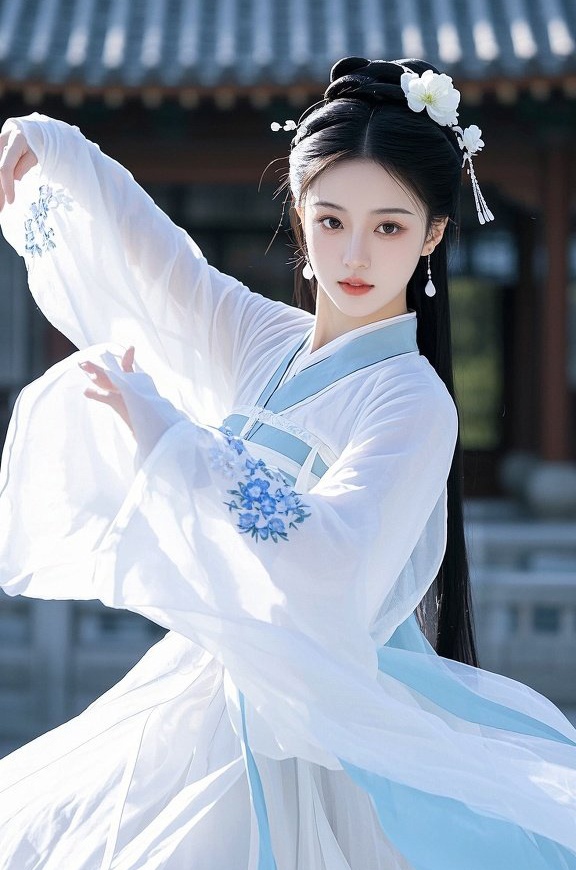
Internal Strength Stretching: Enhancing Immune System Health with Taiyi Youlong Gong Lesson 16
In the world of Qigong and Tai Chi, Internal Strength Stretching (Nei Jin Zi La) is a powerful practice that combines body alignment, energy flow, and mindfulness to promote overall health and vitality. Lesson 16 of Taiyi Youlong Gong (太乙游龙功) is a prime example of how Qigong can be used to enhance the immune system and improve physical well-being. This lesson focuses on a series of movements designed to align the body, activate the督脉 (Governor Vessel), and stimulate the central nervous system, resulting in profound health benefits.
Understanding Taiyi Youlong Gong Lesson 16
Taiyi Youlong Gong Lesson 16 is a dynamic sequence of movements that emphasizes spinal rotation, body alignment, and the cultivation of internal energy (Qi). The practice begins with a series of postures that involve bow stances, hand movements, and coordinated breathing. The ultimate goal is to create a smooth flow of energy from the Yongquan point (涌泉, located on the soles of the feet) up to the Baihui point (百会, located at the crown of the head), ensuring the unimpeded flow of Qi along the督脉 (Governor Vessel). This practice not only strengthens the body but also enhances mental focus and emotional balance.
Step-by-Step Guide to Lesson 16
1. First Movement: Body Rotation and Bow Stance
Starting Position: Begin in a standing position with your feet shoulder-width apart. Keep your spine straight and relax your shoulders.
Body Rotation: Slowly shift your weight to your right leg and rotate your body to the left. As you rotate, lift your left leg slightly and step forward into a Left Bow Stance (left knee bent at a 90-degree angle, right leg straight but not locked).
Hand Placement: As you settle into the stance, raise your left hand in a smooth arc above your head, positioning it near your left ear. Simultaneously, lower your right hand and place it near your right waist. Keep your gaze focused forward.
2. Second Movement: Weight Transfer and Spinal Rotation
Weight Transfer: Shift your weight onto your left leg and push off with your right foot, transitioning into a Right Bow Stance (right knee bent, left leg straight).
Hand Movements: Extend both arms forward at shoulder height, palms facing downward. Maintain a straight line of energy from your head to your right heel, ensuring proper alignment.
3. Third Movement: Hand Cross and Chest Alignment
Hand Cross: Bring your hands together in front of your chest, crossing your wrists so that your left hand is inside and your right hand is outside. Position your hands so that your fingertips point upward, and your left palm faces left.
Body Alignment: Keep your gaze focused forward, maintaining a sense of balance and stability in your stance.
4. Fourth Movement: Weight Transfer and Final Stance
Weight Transfer: Shift your weight onto your right leg and push off with your left foot, transitioning into a Right Bow Stance .
Hand Placement: As you move, raise your crossed hands to your right shoulder, then extend them outward to the right side. Maintain a straight line of energy from your head to your right heel.
Final Adjustment: Turn your head to the left, maintaining your focus and alignment throughout the movement.
Benefits of Taiyi Youlong Gong Lesson 16
Enhanced Immune System Function: By stimulating the督脉 (Governor Vessel) and promoting the flow of Qi, this practice helps to strengthen the immune system and improve overall health.
Improved Posture and Alignment: The movements focus on body alignment and spinal rotation, helping to correct posture and reduce stiffness in the lower back.
Increased Energy Flow: The practice creates a continuous flow of Qi from the Yongquan point to the Baihui point, enhancing vitality and mental clarity.
Mind-Body Connection: The combination of focused breathing, hand movements, and body alignment fosters a deeper connection between the physical and energetic bodies.
Incorporating Taiyi Youlong Gong Lesson 16 into Your Practice
Taiyi Youlong Gong Lesson 16 can be practiced as a standalone exercise or integrated into a broader Qigong or Tai Chi routine. It is particularly beneficial for individuals seeking to improve their immune system health, enhance flexibility, and cultivate internal strength. Whether you are a seasoned practitioner or a newcomer to Qigong, this lesson offers a timeless method for achieving balance, harmony, and vitality.
By mastering the movements of Taiyi Youlong Gong Lesson 16, you can unlock the full potential of Internal Strength Stretching and experience the transformative power of Qigong for yourself.
Practice Tips:
Focus on maintaining proper alignment throughout the movements.
Breathe deeply and smoothly, coordinating your breath with the flow of the technique.
Practice the movements slowly and intentionally, allowing your body to adapt and strengthen over time.
Conclusion:
Taiyi Youlong Gong Lesson 16 is a cornerstone of Qigong practice, offering a powerful way to boost the immune system, improve posture, and enhance energy flow. By incorporating this lesson into your routine, you can experience the profound benefits of Qigong and unlock your body's natural potential for health and vitality. Start practicing today and feel the difference!



